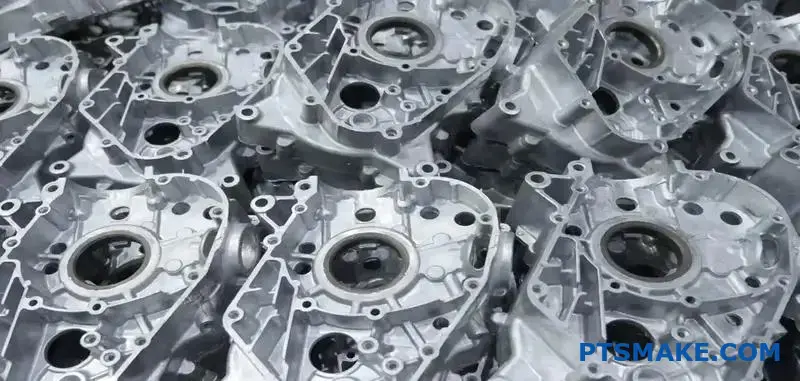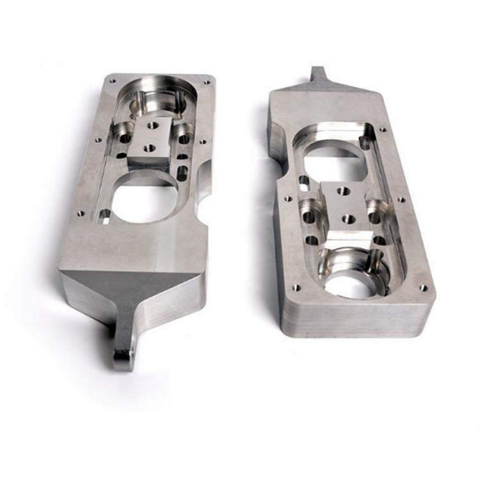How Recycling in aluminum casting Reduce Costs and Waste
Wiki Article
Aluminum Casting Explained: Key Truths and Insights for Industry Professionals
Aluminum casting functions as an essential process in modern manufacturing, shaping components throughout numerous markets. Its varied methods, such as sand and die casting, accommodate various production requirements. The unique residential properties of aluminum alloys improve their applicability, yet tests stay in maintaining high quality and performance. Comprehending these facets is crucial for market professionals. What are the latest developments and finest practices that can even more maximize this procedure?Introduction of Aluminum Casting Processes

Trick components of aluminum casting procedures consist of the preparation of molds, which might be made from sand, steel, or ceramic products, depending upon the meant usage. Additionally, temperature level control is crucial to ensure correct melting and solidification of aluminum.
The casting procedure permits detailed styles and can achieve high degrees of dimensional accuracy. Once cooled, the spreadings may undergo finishing procedures such as machining or surface treatment to fulfill certain performance standards. On the whole, aluminum casting functions as a functional manufacturing technique, successfully meeting the varied needs of different markets.
Kinds Of Aluminum Casting Techniques
In the domain of aluminum casting, different techniques are used to achieve different outcomes. Sand casting strategies supply adaptability and cost-effectiveness for intricate shapes, while die casting procedures use high precision and efficiency for automation. Understanding these techniques is necessary for selecting the suitable technique based on job requirements.Sand Casting Strategies
Sand casting strategies stand for a basic method in aluminum casting, where sand is used as a mold and mildew material to form liquified steel. This procedure includes producing a pattern from the desired part, which is then positioned in a sand mix to form a mold. The sand is compacted around the pattern, and after elimination, it develops a tooth cavity in the form of the part. Molten aluminum is poured right into this cavity, allowing it to solidify and cool. One considerable advantage of sand casting is its convenience; it can fit huge parts and complex shapes. Additionally, the materials made use of are reasonably affordable, making it an available option for different production applications in the aluminum industry.Die Casting Processes
Die casting procedures are a noticeable approach for forming aluminum parts, utilizing high-pressure strategies to force molten metal right into specifically crafted mold and mildews. This process is specifically favored for its ability to create intricate shapes with limited resistances and a smooth finish. There are 2 key kinds of die casting: hot chamber and chilly chamber. Warm chamber die casting is suitable for metals with reduced melting points, enabling faster manufacturing prices. Alternatively, cold chamber die casting is ideal for greater melting point metals, requiring a separate melting heating system. Both approaches enhance performance and decrease material waste, making them vital in auto, aerospace, and durable goods industries. Understanding these procedures aids experts choose the most suitable method for their details applications.Product Residence of Aluminum Alloys

Stamina and Longevity
Strength and longevity are important attributes of aluminum alloys that make them ideal for various casting applications. These materials exhibit a favorable strength-to-weight proportion, enabling the production of lightweight yet durable elements. With regard to tensile strength, details aluminum alloys can be crafted to endure considerable lots without deforming. This residential property is especially essential in markets such as aerospace and vehicle, where efficiency and safety and security are paramount. Furthermore, aluminum alloys typically preserve their mechanical residential or commercial properties under varied temperature level problems, making sure constant performance. The inherent ductility of these alloys likewise allows for efficient shaping during the casting process, making it much easier to create complex geometries. Overall, the strength and durability of aluminum alloys add substantially to their extensive use in advanced applications.Corrosion Resistance Characteristics
While aluminum alloys are valued for their toughness and light-weight homes, their deterioration resistance is one more crucial attribute that improves their viability for numerous applications. Aluminum normally develops a safety oxide layer when exposed to moisture, which aids to stop further oxidation. This intrinsic building makes aluminum alloys especially important in environments vulnerable to corrosion, such as industrial and aquatic settings. Furthermore, various alloy make-ups can influence resistance degrees, with specific alloys especially crafted to boost this particular. Therapies like anodizing can additionally boost deterioration resistance by enlarging the oxide layer. Comprehending the rust resistance of aluminum alloys is essential for industry professionals when selecting products for projects requiring toughness and longevity in difficult atmospheres.Benefits of Aluminum Casting in Production
Aluminum casting deals various benefits in production, making it a preferred choice for numerous industries. One substantial benefit is its light-weight nature, which adds to reduced transportation prices and enhanced power effectiveness in final product. Aluminum's superb thermal and electric conductivity enhances capability in applications needing warmth dissipation or electrical transmission.The material's ability to be cast into complex forms permits for style adaptability, reducing the requirement for added machining procedures. In enhancement, aluminum casting exhibits superior rust resistance, resulting in longer item life expectancies and lower maintenance prices.

Usual Applications of Aluminum Castings
The adaptability of aluminum casting allows its extensive usage across numerous sectors. Typical applications include automobile components, where light-weight and corrosion-resistant elements, such as engine blocks and transmission housings, enhance car performance. In the aerospace industry, aluminum spreadings are made use of for structural elements, providing stamina without including considerable weight.
In addition, the electrical sector take advantage of aluminum castings in making enclosures and heat sinks, where thermal conductivity is essential. The durable goods field also incorporates aluminum castings in items like pots and pans, furnishings, and attractive products, integrating appearances with capability.
The construction market employs aluminum spreadings for building elements, home window structures, and fixtures, which give sturdiness and design adaptability. On the whole, the varied applications of aluminum castings highlight their significance in contemporary manufacturing, adding to advancements in efficiency and product style across multiple fields.
Innovations and Technical Improvements
As industries continue to progress, developments in aluminum casting modern technology are changing production procedures and item capabilities. Innovations in 3D printing and additive manufacturing have enabled the production of complicated geometries that were previously difficult to accomplish with conventional methods. These technologies permit for rapid prototyping, minimizing lead times and expenses.Furthermore, renovations in mold design and materials have actually enhanced the casting procedure by boosting efficiency and lowering waste. The integration of clever manufacturing strategies, such as IoT tools and real-time information analytics, permits much better surveillance and optimization of manufacturing specifications, resulting in higher high quality results.
In addition, growths in aluminum alloys provide boosted toughness, deterioration resistance, and lightweight buildings, dealing with the expanding needs in auto and aerospace industries. Collectively, these innovations are not just boosting performance however also meeting the rigorous requirements of modern design applications.
Finest Practices for High Quality Control in Aluminum Casting
Making sure top notch outcomes in aluminum casting needs adherence to finest techniques that include different phases of the manufacturing process. Thorough product examination is important to confirm the quality of aluminum alloys used, as pollutants can significantly impact the last product. Applying accurate melting and pouring strategies decreases defects; keeping suitable temperatures avoids oxidation and promotes harmony.Mold and mildew design plays an important duty; utilizing computer-aided design (CAD) can enhance accuracy and lower human mistake. Normal surveillance of the cooling procedure is important to prevent warping and shrinkage. Additionally, utilizing non-destructive screening techniques, such as ultrasonic or X-ray assessments, helps identify internal problems without harming the components.
Establishing a feedback loophole with operators and designers cultivates continual enhancement, guaranteeing that top quality control actions advance together with technological developments. By following these finest practices, makers can enhance the reliability and performance of aluminum spreadings.
Frequently Asked Concerns
What Are the Ecological Impacts of Aluminum Casting?
The environmental impacts of aluminum casting include substantial energy consumption, greenhouse gas exhausts, and prospective water air pollution from shop operations. Furthermore, bauxite mining for aluminum ore can cause environment damage and soil degradation.How Does Aluminum Casting Compare to Other Steel Casting Processes?
Aluminum casting typically uses advantages in lightweight parts and rust resistance contrasted to various other procedures, such as iron or steel casting, which might offer greater toughness however result in much heavier and less corrosion-resistant items. - Aluminum FoundryWhat Prevail Problems in Aluminum Castings and Their Causes?
Usual defects in aluminum spreadings include porosity, shrinkage, and additions. Reasons often originate from incorrect pouring techniques, poor mold style, or contamination of the liquified metal, influencing the final item's integrity and performance.What Security Preventative Measures Should Be Taken During Aluminum Casting?
During aluminum casting, necessary safety and security preventative measures include wearing safety gear, guaranteeing proper air flow, preserving a website clean work area, managing molten steel with care, and following established procedures to reduce threats of burns, breathing dangers, and mishaps.Exactly How Can I Enhance the Performance of My Aluminum Casting Procedures?
To improve efficiency in aluminum casting operations, one need to enhance mold and mildew layout, streamline material handling, use automated processes, perform normal upkeep on tools, and buy employee training to boost skills and performance.Various techniques exist, aluminum casting incorporates a number of main procedures that cater to different applications and needs. Trick components of aluminum casting procedures consist of the preparation of molds, which might be made from sand, steel, or ceramic products, depending on the planned use. Sand casting methods stand for a basic technique in aluminum casting, where sand is utilized as a mold material to form liquified metal. As industries continue to progress, innovations in aluminum casting technology are transforming manufacturing processes and item capabilities. Making certain top notch outcomes in aluminum casting needs adherence to finest practices that encompass numerous phases of the manufacturing process.
Report this wiki page